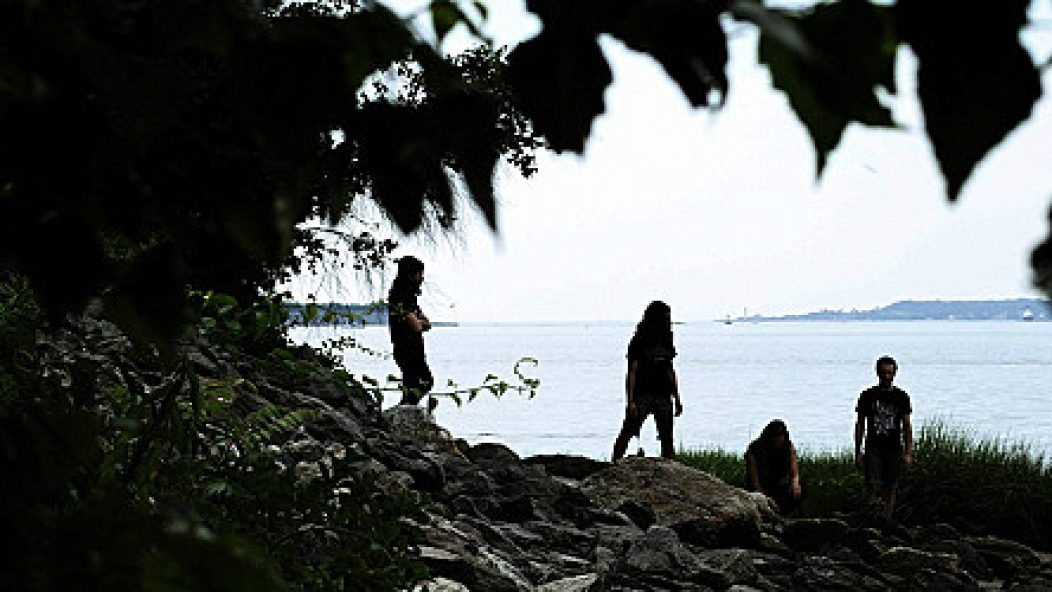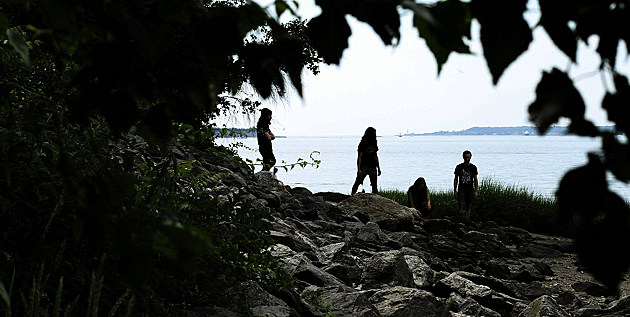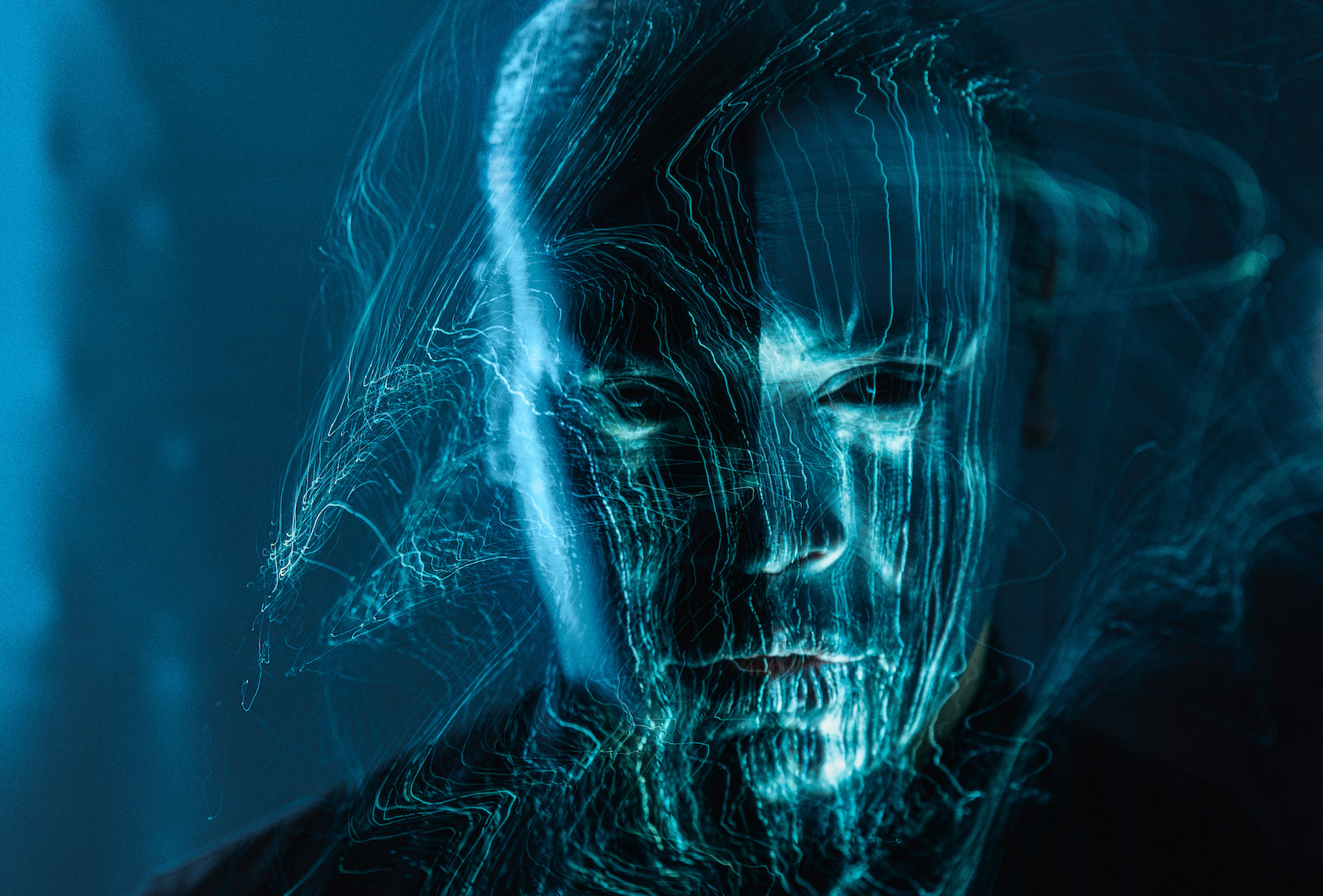
Choice Cuts: Falls of Rauros - "Waxen Voices"
…
Welcome to the inaugural post in our new series, Choice Cuts. In this series, we will be featuring one song from a band and interviewing a member (or members) of that band about that song’s writing and recording. The aim is to not only bring attention to a particularly striking work in a band’s discography, but to dig into what goes into the process of creating one individual composition.
…
Over the course of their decade-long career, Falls of Rauros have established a sound both amorphously American and specifically New England. You can hear it in the thin, wiry lead tones of the leads and solos that echo the salt water fog of the northeastern seaboard, or the creaky Americana that dots the acoustic segments which bind the more aggressive black metal that dominates the rest of their style.
The Maine quartet perfected this blend of serenity and desperation on “Waxen Voices,” the centerpiece of last year’s fantastic Believe in No Coming Shore. As a sum of its parts, the 11-minute composition covers more ground than many in this genre of sprawling compositions dare attempt in its comparatively average runtime. But break it down into its individual movements, and “Waxen Voices” reveals itself as something much more intimate and self-referential, yet just as complex. So much so that in the course of our interview, Aaron Charles pointed out several details I had missed after a play count that numbers well into the hundreds.
…
…
On Believe in No Coming Shore’s raw sound
Believe in No Coming Shore was recorded partially live. We captured everything at Acadia Recording Company here in Portland [Maine]. They have isolation booths and plenty of mics with which to record a quartet so we took a stab at recording drums, two guitars, and bass together through most of the album. This includes all the transitioning between clean and distorted parts; we didn’t do separate takes for those. You definitely hear a decent (but still modest) amount of overdubs, including the vocals, but for the most part you’re hearing the four of us playing together in a room. We also eschewed multitracking guitars, which accounts for, in part, the raw sound.
On “Waxen Voices”’ repeating theme
That theme appears in the song numerous times, although I wouldn’t say the song was necessarily “built” on that theme itself. As the song was written and developed we opted for reusing or transposing a snippet of a melody / motif in lieu of coming up with an altogether new idea. We figured we had ample supply of raw ingredients for the song already and each section would be enriched by cross-referencing and interposing those ingredients at various points. It turns out that theme works well over several riffs in the song, although its key changes as it progresses, among other adjustments.
Others to speak of would be the clean rhythm part at the end of the song is the same riff that’s played around the four minute mark, and around 6:45 you’re hearing a reemergence of the second fingerpicking riff of the song (during the intro) but tremolo picked, and with the closing melody from the earlier guitar solo tremolo picked on top of it, etc. The very opening of the song is also closely related to the last “heavy” riff of the song around 7:30.
On tying together the four distinct sections of the song
We assembled and tweaked the song together at our practice space so much of the part-to-part, narrative flow and transitioning is a result of “jamming” (for lack of a better word) and seeing where the energy of the song “wanted” to go next. That arc was then formed from a mixture of provisional suggestions and plenty of trial / disposal. If we liked something we’d continue down that path and details would emerge by improvisation or by happy mistake and we’d try to replicate that and improve it. This, to me, felt like a pretty “natural” songwriting process and not as pedantic as it might sound in description. We wanted diversity but not for its own sake.
On that freakin’ gorgeous solo at 2:55
That solo was written after the bulk of the song had come together. It was rudimentarily assembled and attempted at full band rehearsals near the end of the album’s basic composition; still early enough where I decided to take the melody from the end of the solo and use it later in the song in a tremolo picked style. That “theme” originated during the writing of the solo and was subsequently used around the seven-minute mark. The rest of the solo came together pretty naturally; it starts with a simple melody and then diversifies with a speedier picked section and then a fully legato run before arriving at that theme mentioned before. The idea was to include variety but hopefully keep things tasteful and purposeful. Taking a snippet and using it at a later point in the song helps reinforce that purpose, or could be seen as serving that function.
On the song’s place in Believe in No Coming Shore’s overall narrative
Awareness of (and confounding of) human senses comes up throughout this song-set, “Waxen Voices” being no exception. It really depends on who is listening and that person’s current circumstances. I think the final stanza really brings into light the suggestion of self-accusation. I tend to feel severed and distanced from the lyrics I write shortly after they’re recorded, so retracing the past couple years and reviving whatever once-prevailing sentiment occupied my mind is difficult and not exactly beneficial.
In terms of the whole of the album, this wasn’t intentional or pre-arranged, but I would say it begins with an almost optimistic aspect and by the end you’ll find scarcely any trace of that.
On his memories of recording “Waxen Voices”
For “Waxen Voices” [we played] from beginning to end as a full-band; omitting vocals, the two “solos” and other overdubs. We played the clean and distorted rhythm parts live in a room together. We then tracked the solos, a lead guitar part or two, overdubbed an acoustic guitar in the beginning and then finished with vocals. I don’t think any keyboards or other overdubs were added.
It was relatively painless and smooth by our standards. I certainly don’t have any terrible memories associated with it. It took a few tries to get my solo played cleanly enough, and I remember tweaking Jordan’s lead guitar tone at the end of the song for awhile, trying to get just enough grit and sustain without it sounding like a “distorted” guitar. The lack of horror stories is great; this was the first recording session in which we really felt like a band, in the traditional sense.
…











